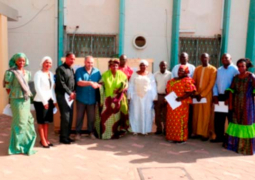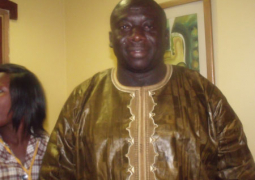I have never had any objection to government critics about the poor condition of roads linking towns within the Greater Banjul and the Kombo areas. In these places, it is common to hear angry commuters complain about the precence of potholes and ditches on certain roads such as Kairaba Avennue, the Kololi end of the Senegambia highway, the Serrekunda Mosque road through Kotu Silo road, the entrance at the Brikama garage, and the road to Jalambang, among others. Passengers in taxis cannot just bear the shock of the hard ride to reach to their various destinations. These issues are mainly talked about in the town, the traffic and at homes.
In my recent experience on the journey to Mansakonko, I can say that however disgruntled commuters may be within these urban areas they cannot criticise government for the poor road network in the presence of travellers to Jarra Soma through the Trans-Gambia Highway.
At the Brikama Garage, I chose to board a six-wheeled minibus believed to possess all the features of a smooth ride on a rough road. The journey began smoothly up to Kalagi, the last village in the Foni where the tarred road of the Mandinaba-Jarra Soma road construction project ends at the moment.
I did not notice our arrival there until a baby girl who has been asleep wept.The baby was annoyed with the hard hit the car began to make on the gravel through the Kiang areas. Her mother mistakenly poured water into her nose, in attempt to get her to drink.
The jiltering and the dust was from there on unavoidable. I later on noticed that my own handwriting in noting down my story points in the journey was as horrible as my primary school notes about two decades ago.
At that point, passengers made a unanimous agreement for all the car windows to be widely opened for proper ventillation of the dust emanating from the road. What a big nonesense! I felt imprisoned because the place was totally dark with dust so much so that it was a problem to let my eyes open, while the shock continued for nearly two hours.
Drivers would not drive at a low speed. They keep overtaking one another at high risk to lives including their own. This is because they have a shared philosophy that the higher speed they drive, the less severe the faults will be on their vehicles and pain for the passengers.
There was a 22 passenger seater with a fault, with its disembarked passengers waiting on the driver to complete fixing the fault. When the driver of the vehicle I boarded asked his colleagues there if it was alright with them, they responed in the positive. They described it as a minor tyre problem. Those drivers were, however, lucky to notice the punture before the tyre could burst into a fatal accident.
Another time, it was a driver asking for a car jerk. “Not a serious problem”, he also said. Yes, not a serious problem, since there was no casualty, I began to understand.
When I reached Jarra Soma, I looked like a fool who bleached her skin. I could not describe how one American Peace Corps volunteer looked like with the addition of red paint on her white skin. We were equal to those who inevitably have to sit on their small Bantabas in their villages along the road in the Kiangs and the Jarras.
I wondered why I subjected myself to such a journey, but God knows I had to hit the road to Mansakonko.
No wonder the sides of this road are bushier than inside the forest for most parts of the year. I asked a herdsman, why cattle do not graze the pasture by the road. “They do”, he responded.
He explained that the cattle prefer the fresh pasture, no matter how far in the forest than the dust contaminated pasture near the road.
According to him, cows particularly would only turn to these infected pasture when they have no option to fresh feed.
So even the animal kingdom will rejoice if the Trans Gambia Roads construction is completed.
Read Other Articles In Article (Archive)



